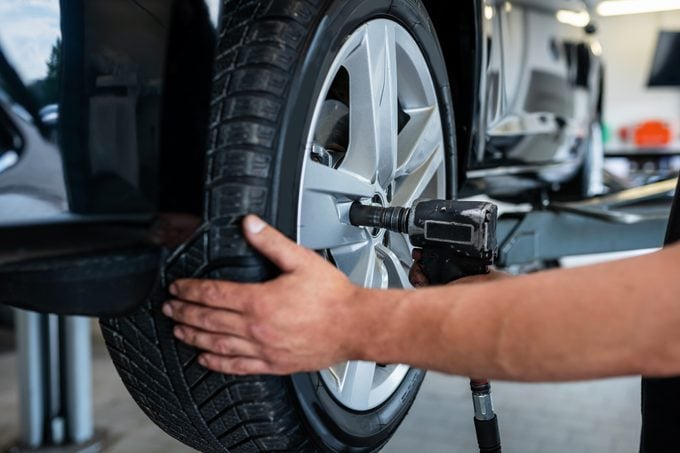Maintenance is key to long car life and good performance. Keep your car in excellent shape by knowing what needs to be done and when to do it.

Car Maintenance Schedule to Follow for Good Car Health

Do you have a car or pickup truck that you want to keep running reliably for the long haul? A diligent vehicle maintenance schedule is the only way that’ll happen. Learn about the TLC that your vehicle needs to remain reliable and set reminders to help you make it all happen.
On This Page
Check Fluid Levels

This takes less than five minutes and should happen every few weeks. Fluids that need checking include engine oil, transmission fluid, engine coolant, brake fluid, power steering fluid and windshield washer fluid. Top off these fluids as needed. If a fluid level is unexpectedly low since the last time you checked, look for a leak.
Check Lights
It’s easy to miss a burned-out headlight, tail light or turn signal light from the driver’s seat. Get a helper to operate the light controls inside the vehicle while you’re standing outside the vehicle to make sure everything works. Replace auto light bulbs as necessary to avoid getting pulled over and possibly fined.
Replace the Cabin Air Filter
Most vehicles have a filter that purifies air before the heater and AC fan pulls it into the vehicle, and this filter should be changed every year under normal conditions. Change the cabin filter every 6 months if you drive regularly on dirt roads.
Check Tire Pressure and Tread

Officially speaking, you should check each tire with a pressure gauge at least once a month. Diligent car owners give their tires a quick visual check before every trip. Tires naturally lose about 1 pound per square inch (PSI) of air pressure each month, so expect to have to top them off.
Replace Engine Air Filter
For every gallon of gas an engine burns, it consumes about 15 gallons of air. Dirt, dust and bugs need to be filtered out of this air before it goes into the engine, and this is what the engine air filter does. Replace the air filter every 12,000 to 15,000 miles or every year.
Change Engine Oil and Filter
Consult your owner’s manual for recommendations of how far you can drive between oil changes. Do not exceed this interval. Most vehicles are rated to go 3,000 to 8,000 miles between oil and filter changes. Synthetic oil can extend the service interval to as much as 15,000 miles. Regardless of how little you drive, change your engines oil at least every 12 months.
Rotate Tires

Moving tires from one location on your vehicle to another helps even out tread wear and extends the life of a set of tires. Rotate tires every 6,000 to 8,000 miles or every 6 months. While you’re at it, examine tire tread depth. When the tread is down to the wear bars or less than 1/8 inch deep, it’s time for new tires.
Replace Timing Belt
This vital part is inside the engine so you can’t see it. There’s also no warning that a timing belt will break. If it does, your engine will suffer catastrophic damage, and that’s why manufacturers recommend a new timing belt every 60,000 to 100,000 miles. Do not drive more than the recommended service interval. Some vehicles don’t have a timing belt. If yours has a timing chain, there’s no need to change it.
Replace Spark Plugs
How often depends on what the manufacturer specifies. Some spark plugs need changing every 20,000 miles, while other vehicles only need them changed every 100,000 miles.
Replace Serpentine Belt
This visible belt drives all the accessories that run off your engine. Items such as power steering, alternator, water pump, fan, smog pump and other items rely on the serpentine belt to operate. It should be changed every 50,000 to 60,000 miles or every four or five years. If you see the belt has cracks and frayed edges, change the sepentine belt right away.
Change Engine Coolant
As part of the scheduled vehicle maintenance program, most owner’s manuals recommend changing the coolant every 30,000 to 60,000 miles. Most automotive coolant is highly toxic, so if you change coolant yourself, never put the old stuff down the drain. Take it to an auto garage or municipal toxic waste facility.



















